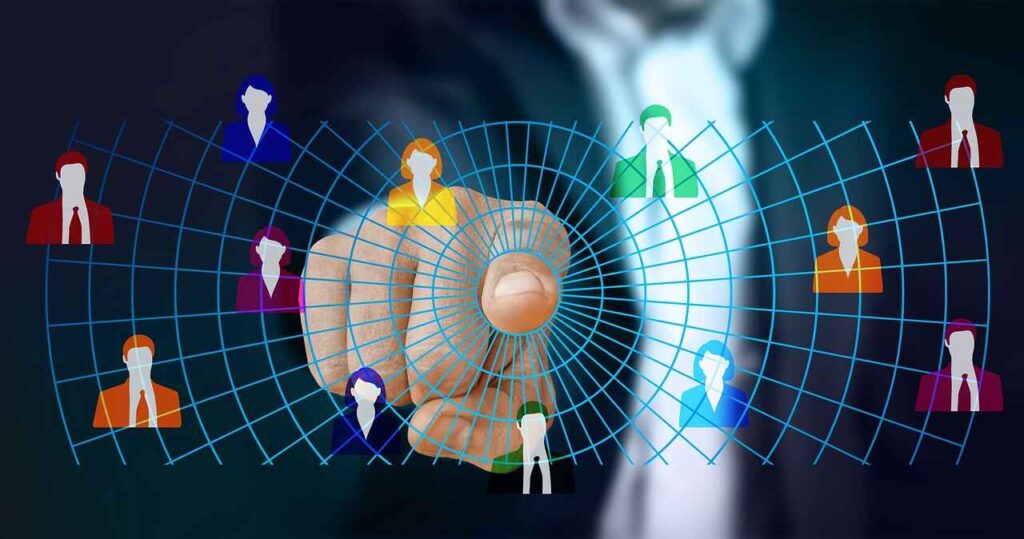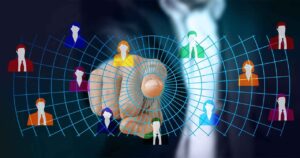
Introduction
Artificial Intelligence (AI) is undergoing rapid growth, significantly transforming industries, economies, and societies. By 2025, the global AI market is projected to be valued between USD 240 billion and USD 638 billion, with an expected compound annual growth rate (CAGR) ranging from 19% to nearly 40% through the early 2030s. For example, Precedence Research estimates that the market will reach USD 638 billion in 2025 and rise to USD 3.68 trillion by 2034, representing a CAGR of 19.2%. In contrast, MarketsandMarkets forecasts a market size of USD 371 billion in 2025, growing to USD 2.4 trillion by 2032.
This explosive growth is driven by the widespread adoption of AI across various organizations. Surveys indicate that 78% of companies implemented AI in at least one business function in 2024, an increase from 55% in previous years, with around 71% utilizing generative AI.
Gartner projects that global investment in generative AI will reach USD 644 billion by 2025, reflecting a 76% year-over-year increase. Companies expect to see return on investment (ROI) multiples of approximately 3.7 times.
Investment in AI is primarily led by major economic powers. In 2024, private AI funding in the United States totalled USD 109 billion, compared to China’s USD 9.3 billion. Meanwhile, emerging economies are showing greater public trust in AI, with about two-thirds of individuals in less-developed countries expressing confidence in the technology’s benefits, compared to only two in five in advanced nations.
Governments and corporations are increasingly aligned in their agendas. At the AI Action Summit held in Paris in February 2025, the European Union pledged €200 billion, including €20 billion designated for AI “gigafactories.”
India’s AI ecosystem is expected to reach USD 8 billion by 2025, driven by strong regulatory support and a growing pool of skilled professionals, with a projected CAGR of 40%.
Recent Developments in AI
Next Gent Multimodal and Reasoning Model
- Grok 4 (xAI): Launched on July 9, 2025, this model addresses multimodal inputs—including text, images, and possibly video—and interprets memes. It emphasizes advanced reasoning and coding, maintains a strong anti-censorship stance, and integrates with X (formerly Twitter).
- GPT-4 (OpenAI) has established new benchmarks for native voice-to-voice and vision understanding in over 50 languages, achieving a score of 88.7 on the MMLU. In 2024, a real-time API and voice mode were released, further solidifying its dominance.
- Gemini 2.5 Pro (Google/DeepMind) was launched in early April 2025. This model introduces step-by-step reasoning, supports multimodal inputs (text, audio, image, and video), and features context windows of up to 1 million tokens, which allows it to build apps and analyse long documents.
- Claude 3.5, which includes the Sonnet and Haiku models developed by Anthropic, was released in June 2024 and updated in May 2025. The Sonnet model significantly enhances coding and reasoning abilities, improving performance on the SWE-bench from 33% to 49%. Meanwhile, Haiku is a lightweight model that outperforms earlier versions, and support for images is coming soon.
- In May 2025, Mistral released Medium 3, which almost matched Claude Sonnet in performance while being offered at a lower cost. Additionally, Devstral, an open-source coding model with 24 billion parameters, was launched under the Apache license.
- Qwen 3 (Alibaba Cloud) was released on April 28, 2025. It leads in Chinese-language benchmarks and supports multilingual reasoning, featuring an Apache-2.0 open license and experiencing strong developer adoption..
- In early 2025, Meta released Llama 4 Scout and Maverick, which are multimodal open-weight models. A larger Llama 4 Behemoth model is currently under development as a future teacher model.
Generative Video and Content Tools
- Veo 3 (Google DeepMind): Released on May 20, 2025, this model now generates 1080p videos with synchronized audio, including sound effects, dialogue, and ambient noise, representing a shift from silent to full multimedia generation.
- At Adobe Max London 2025, Adobe introduced Firefly Image Model 4, Firefly Boards for collaborative mood boarding, text-to-video capabilities in Premiere Pro, and a content authenticity tool to embed origin metadata.
- Image 4 (Google DeepMind): Deployed on May 20, 2025, this latest iteration of Google’s flagship text-to-image model is notable for its photorealism and rich creative output, and it is integrated into Gemini and Developer tools.
- Ideogram 3.0 (start-up): Facilitates style-guided text-to-image generation, aiding marketing and design workflows through support for uploaded style references.
- Kling 1.6 Pro: An advanced video engine offering complex scene fidelity and adherence to prompts for professional creators.
Enterprise, Infrastructure and Auto Agents
- AlphaEvolve (DeepMind) was launched on May 14, 2025. This evolutionary coding agent autonomously develops enhanced algorithms and rediscover optimal solutions in 75% of test cases related to mathematics and systems optimization. Additionally, it reduces data center waste by 0.7%.
- Introduced in April 2025, Google Ironwood is a TPU chip designed specifically for inference. The Agent-to-Agent (A2A) Protocol is an open standard that promotes collaboration among over 50 partner businesses.
- Cerebras Infrastructure with Qwen3-32B: In early 2025, Cerebras announced data centre expansions and partnered with Meta to power Llama 4 inference, achieving up to 18 times the GPU speed. In May, it launched Qwen3-32B, a high-performance reasoning language model.
- In December 2024, Amazon unveiled the Nova family on AWS, which includes Nova Micro, Nova Lite (a low-cost multimodal option), Nova Pro, and the upcoming Nova Premier. The Nova family offers new features such as image generation with Nova Canvas and video generation with Nova Reel, both available on AWS Bedrock. Additionally, there are plans to introduce speech-to-speech models by late 2025.
- Microsoft Build 2025: Microsoft expanded its Copilot features across Windows 11 and Microsoft 365. The update introduced autonomous agents, new AI models designed to reduce reliance on OpenAI, and unveiled tools for scientific research and accessibility.
- Gartner’s forecast predicts that by 2027, 40% of generative AI will be multimodal, encompassing text, image, audio, and video. This marks a significant increase from just 1% in 2023, indicating a major shift in organizational AI adoption.
Key Application Areas
Healthcare
- Diagnostics and Imaging: AI algorithms are revolutionizing healthcare by achieving up to 95% accuracy in detecting critical conditions such as skin and breast cancer, as well as interpreting imaging scans. This innovative technology supports radiologists and significantly reduces diagnostic errors by around 20%, leading to quicker and more reliable patient care.
- Clinical Decision Support: Approximately 29% of healthcare professionals are currently leveraging AI tools for clinical decision-making. By using predictive analytics, healthcare facilities can substantially lower readmission rates by about 15%, enhancing patient outcomes and optimizing resources.
- Cost and Efficiency: Forecasts suggest that by 2025, AI-driven chatbots will save a remarkable US$3.6 billion, contributing to an astounding total healthcare cost reduction of up to US$13 billion. This presents a compelling case for integrating AI into everyday healthcare practices.
- Drug Discovery: The impact of AI on drug discovery is profound, accelerating candidate screening by as much as 46% while slashing research and development costs by up to 70%. This transformation is set to expedite the delivery of innovative treatments to patients faster than ever.
- Mental Health and Telemedicine: AI-powered therapy tools, such as Woebot, are becoming increasingly essential, while virtual assistants now handle up to 50% of telemedicine visits. This not only enhances access to care but also allows health professionals to focus on more complex cases, thereby improving overall patient experience.
Finance and Banking
- Fraud Detection & Compliance: Approximately 67% of financial firms use AI for fraud detection, resulting in a reduction of losses by about 45%.
- Customer Service: AI chatbots are responsible for handling around 75% of routine inquiries in banking and insurance sectors.
- Algorithmic Trading & Asset Management: AI-driven strategies now account for roughly 40 to 50% of trades, with robo-advisors managing over $2 trillion in assets.
- Operational Efficiency: AI tools can reduce loan processing times by up to 75% and are projected to generate savings of $1.4 trillion by 2030.
Education
- Personalized Learning: With around 60% of educational institutions embracing adaptive AI systems, we are witnessing a remarkable 30% boost in student retention rates. This advancement not only enhances learning experiences but also fosters a supportive educational environment.
- Automation of Administrative Tasks: AI is revolutionizing administrative efficiency by automating roughly 45% of duties and managing grading for about 70% of assignments. This allows educators to focus more on teaching and engaging with students, ultimately improving overall educational quality.
- Student Adoption: An impressive 50% of students are leveraging AI tools for essay writing, showcasing a significant shift toward integrating technology in education. Additionally, approximately 58% of educators are depending on generative AI, enhancing their teaching methods and resources.
- Upskilling & Training: Initiatives like IIT Delhi’s six-month course in AI for Healthcare reflect the rising demand for AI-driven professional education. Such programs are not only equipping individuals with essential skills but also preparing the workforce for the future of work driven by technology.
Industry and Public Services
- Predictive Maintenance: Around 65% of all industrial AI usage is tied to predictive maintenance, boosting uptime and safety.
- Smart Factories: AI-managed production lines optimize designs and workflows via digital twins, smart sensors, and multi-agent systems.
- Urban & Infrastructure Efficiency: AI automates benefits distribution, emergency call triage, disease surveillance, traffic management, and city maintenance, embedding intelligence into everyday governance.
- Participatory Design: Governments are increasingly adopting community-engaged algorithms in smart city pilots to ensure fairness and trust.
Sustainability and Environment.
- Agri-Tech: AI-driven farm analytics are enhancing crop yields and reducing energy waste through smart-grid integration.
- Environmental Monitoring: AI tools now automatically identify deforestation and optimize resource management in smart cities.
Global AI Investment and Economic Impact
- Goldman Sachs estimates that global investment in artificial intelligence (AI) will reach approximately USD 200 billion by 2025, fuelled by advancements in hardware, infrastructure, and enterprise adoption.
- Investments in data centres related to AI infrastructure are projected to total USD 750 billion, which includes the Stargate project—a $100 billion initial phase developed by OpenAI, Microsoft, Oracle, and other companies.
- According to a report from The Economic Times, in the first half of 2025, 53% of global venture capital funding was allocated to AI, with an even higher figure of 64% in the United States.
- Goldman Sachs also estimates that the United States will attract nearly USD 100 billion in private AI investment by 2025.
- U.S. federal initiatives include a proposed US$70 billion investment in AI and energy under the Trump administration, as well as plans for the Stargate supercluster.
- The EU’s InvestAI initiative has committed €200 billion, which includes €20 billion allocated specifically for the development of AI “gigafactories.”
- The UK plans to invest £14 billion in AI infrastructure and enhanced upskilling programs.
- China is projected to invest approximately ¥730 billion (around USD 100 billion) in AI and robotics by 2025, focusing on advancements in manufacturing and healthcare.
- The UAE’s AI market is expected to grow significantly, increasing from USD 3.5 billion in 2023 to USD 46.3 billion by 2030, driven by initiatives in infrastructure and talent development.
- Saudi Arabia’s strategy includes the expectation that AI will contribute approximately 12% of its GDP by 2030.
- In India, private funding for AI reached USD 1.4 billion in 2023, ranking the country 10th globally. Since 2013, total investment in AI has been around USD 11 billion. The AI market in India is forecasted to reach USD 8 billion by 2025, with a rapid growth rate of approximately 40% CAGR.
- PWC projects that AI adoption could contribute approximately 15 percentage points to global GDP by 2035, which translates to around 1 percentage point of annual growth.
- EY (Ernst & Young) believes that investments in generative AI may increase global GDP by 0.5% to 1% by 2033, amounting to between USD 500 billion and USD 1 trillion.
- Goldman Sachs forecasts that AI could account for 2% of U.S. GDP and 1.5% of GDP in other major economies at its peak.
- AI is estimated to generate USD 340 billion annually across sectors such as banking and insurance. Additionally, predictive maintenance can reduce factory downtime by 50%.
- The manufacturing, healthcare, and finance sectors drive significant economic changes, with manufacturing alone accounting for up to 78% of AI adoption.
Policy, Regulation and Ethics
European Union AI Act and Code of Practice
- The EU AI Act, which came into effect on August 1, 2024, classifies AI applications according to their risk levels. This ranges from those deemed “unacceptable risk,” such as biometric surveillance and social scoring, to general-purpose AI (GPAI), which is subject to lighter oversight.
- Compliance for providers of GPAI will start on August 2, 2025, with broader enforcement expected to roll out through 2027. Violations may result in fines of up to 7% of global turnover, capped at €35 million.
- On July 10, 2025, the EU published a voluntary Code of Practice aimed at enhancing transparency, copyright protection, and safety for GPAI. This serves as a proactive guideline for industry players including OpenAI, Google, Meta, Anthropic, and Mistral.
- However, large EU corporations such as Siemens, SAP, Airbus, and Mercedes-Benz have criticized the Act as overly stringent, arguing that it could hinder their competitiveness.
- A report from the European Data Protection Board in April 2025 highlighted the importance of managing privacy risks throughout the AI lifecycle in accordance with the GDPR and the AI Act.
- Additionally, complementary legislation such as the AI Liability Directive and updates to product liability laws are increasing legal accountability for AI systems.
International Treaties and Summits
- On September 5, 2024, representatives from over 50 countries signed the Council of Europe’s Framework Convention on Artificial Intelligence. This agreement emphasizes that AI must align with human rights, the rule of law, and democratic principles.
- In February 2025, the AI Action Summit took place in Paris, resulting in a declaration endorsed by 58 countries that promotes the development of inclusive, safe, and transparent AI. Notably, the United States and the United Kingdom chose not to sign the declaration, citing concerns related to national security and governance.
- In June 2025, during the 51st G7 summit in Canada, leaders signed a joint statement addressing several key issues: artificial intelligence (AI), critical minerals, quantum computing, wildfire prevention, and migrant smuggling. They emphasized the importance of collaboration on trustworthy AI and the development of associated supply chains.
- In July 2025, BRICS summit, leaders from Brazil, Russia, India, China, and South Africa met in Rio de Janeiro and advocated for data protection. They called for fair compensation for the use of training data and established safeguards against its misuse.
- At the La French Tech India AI Summit held in Bengaluru in June 2025, participants focused on ethical and inclusive AI development. The summit strengthened bilateral dialogue in advance of the India–France Year of Innovation, scheduled for 2026.
- The ITU’s (International Telecommunication Union) AI for Good event, held in Geneva in July 2025, brought together UN agencies, governments, and industry leaders to explore how AI can be applied to address global challenges such as sustainability and health.
- The AI Seoul Summit in May 2024 resulted in the signing of the “Seoul Declaration” by G7 nations and other countries, advocating for safe and inclusive AI based on ethical governance.
India’s Evolving Governance and Ethics
- India is making strides toward the implementation of a Digital India AI Act, with the Ministry of Electronics and Information Technology (MeitY) issuing advisories on content labelling, bias prevention, and restrictions on deepfakes. However, a formal AI law is still under development.
- In January 2025, the newly established AI Safety Institute, part of the IndiaAI initiative, will focus on establishing standards, risk frameworks, and damage detection, initially supported by ₹20 crores of public funding.
- Odisha’s AI Policy-2025 is a pioneering state-level framework that emphasizes AI infrastructure, skills development, and ethical considerations, deploying AI officers across various government departments.
- In June 2025, OpenAI signed a memorandum of understanding (MoU) with the IndiaAI Mission to train one million teachers and to provide API credit funding to startups focused on developing applications in local languages.
United States
- Currently, there is no comprehensive federal law governing artificial intelligence (AI), but 45 states in the U.S. have introduced approximately 550 bills related to AI. These bills focus on various issues, including privacy, liability, and workplace safety.
- Additionally, the AI Environmental Impacts Act of 2024, proposed in the Senate, along with several state-level bills, seeks to monitor the environmental impact of AI, particularly regarding emissions from data centres.
Conclusion
As we move through 2025 and beyond, Artificial Intelligence (AI) is no longer a distant concept but a transformative force that is redefining economies, governance, warfare, and daily life. With rapid advancements in generative AI and multimodal models, along with significant global investments and evolving policy frameworks, AI is reshaping the very foundations of power, productivity, and possibility.
The global race for AI dominance, led by the U.S., China, and the European Union, is intensifying. Developing nations like India aim to balance innovation with ethical oversight. While the technology promises unprecedented economic benefits, it also raises critical concerns about energy consumption, workforce disruption, regulatory inconsistencies, and ethical accountability.
International treaties and summits have started to establish a foundation for collaborative AI governance. However, significant disparities remain in national approaches, particularly regarding transparency, surveillance, and data sovereignty. Additionally, the emerging era of agentic AI, quantum integration, and biotech convergence indicates a paradigm shift in how societies interact with machines—not merely as tools but as autonomous systems that will influence our choices, cities, and civilizations.
Ultimately, the future of AI depends not only on technological breakthroughs but also on our collective ability to guide its development—responsibly, inclusively, and sustainably. The decisions made today will determine whether AI becomes a catalyst for shared prosperity or deepened inequality. Therefore, it is essential for governments, industries, academia, and civil society to work together to create a framework that maximizes innovation while safeguarding human values, rights, and dignity.







